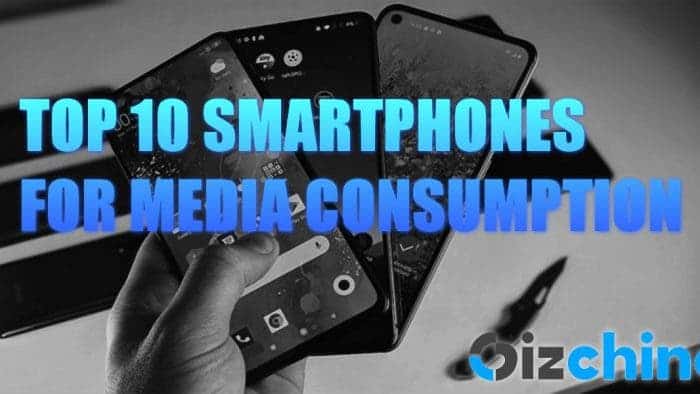April is giving its last breath, and we are here to bring a new edition of our “Top 10 smartphones for Media Consumption” listing. For some users, media consumption is basically one of the reasons pushing forward the smartphone market. Especially in these days of pandemic when people are forced to stay at home and need to find ways to kill boredom.
We’ve been passing countless hours watching movies through online video streaming or gaming services, we’ve been navigating through social media feeds or we’re playing games with our handsets to kill boredom. If you need a good smartphone for media consumption’s sake, then you will need to look at some important factors – Display, Battery Capacity, and certain aspects of the hardware. We hope that on this list, you will get the necessary help to get a good smartphone. Hopefully, any of these devices will meet your needs in this particular department. We’ve elaborated a list of the top 10 smartphones for media consumption you can get in April 2021.
TOP 10 SMARTPHONES FOR MEDIA CONSUMPTION – DISCLAIMER
The devices in the list are, in our opinion, the best devices for watching Netflix and other streaming platforms such as YouTube, Twitch, etc. Moreover, they also deliver great performance and are ideal for trending apps such as TikTok, Instagram, and even Clubhouse. They can also play demanding games without much stress. So if you’re needing a device that will meet all your “multimedia needs” check out our list with good recommendations. Take in mind that these are just the best 10 devices in our opinion. For the next month, there will be more options, and a new list with our best ten picks.
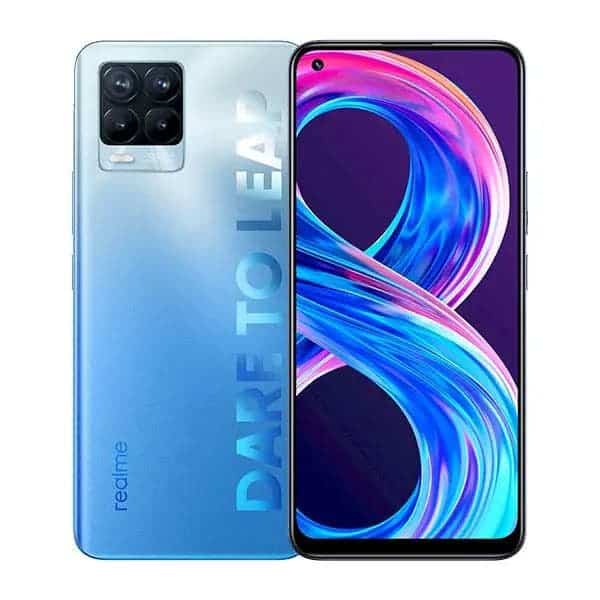
Realme 8 Pro
We start our list of top 10 smartphones for media consumption with one of Realme’s latest releases, the Realme 8 Pro. This handset is the first in the company’s story to pack an impressive 108MP camera from Samsung. The device generated mixed feedback, but we believe that the entire package makes it a strong contender for this particular category of media consumers.
The Realme 8 Pro stands against the big majority of smartphones in the mid-range segment thanks to its AMOLED display. While most of the competition is using LCDs, the Chinese brand has equipped its mid-range king with a gorgeous OLED-based panel. To make things even more interesting this display houses a fingerprint scanner underneath. However, there is a major downside in the Realme 8 Pro, it lacks any kind of high-refresh-rate and is capped at 60Hz. The display is a 6.4-inch Super AMOLED unit that delivers 430 nits of brightness and 1,000 nits of peak brightness. It offers 2,400 x 1,080 pixels of resolution which results in a 20:9 aspect ratio. It also comes with support for Always-On display mode driven by Android 11-based Realme UI 2.0.
Unfortunately, in terms of performance, the Realme 8 Pro is not taking a big step for the family. For the third time in a row, Realme is using the Qualcomm Snapdragon 720G chipset on its numbered smartphone series. This chip isn’t bad at all, but there are more options in the market right now. Even the 4G Snapdragon 732G SoC is a better option. Unfortunately, users will not see an upgrade until the Realme 9 Pro. The CPU is paired with 6GB of RAM and 128GB of RAM. However, if you need extreme multi-tasking capabilities to seamlessly navigate through Facebook while you put a gaming session on hold, then you’ll need to pick the variant with 8GB of RAM and 128GB of Internal Storage. Fortunately, bot versions come with a microSD card slot for further memory expansion.
The Quad-Camera setup in the Realme 8 Pro is certainly the reason behind many sacrifices in display and performance. The primary camera is a huge 108MP sensor with f/1.9 aperture, PDAF, and 0.7um. The camera is accompanied by an 8MP f/2.3 module with 119-degrees FOV. Further, it has a 2MP f/2.4 sensor for macro shots and a 2MP f/2.4 depth-sensing module. The 108MP camera will allow users to capture stunning images with a lot of detail. Of course, you’ll need to check if your favorite social media will be able to handle these images without sacrificing the quality. The device does not disappoint in the selfie department thanks to a 16MP f/2.5 camera.
The Realme 8 Pro offers dual-band Wi-Fi, Bluetooth 5.0, GNSS, NFC, and fortunately comes with a 3.5mm audio jack. The device has a 4,500mAh battery keeping the lights on which is complete with 50W fast-wired-charging.
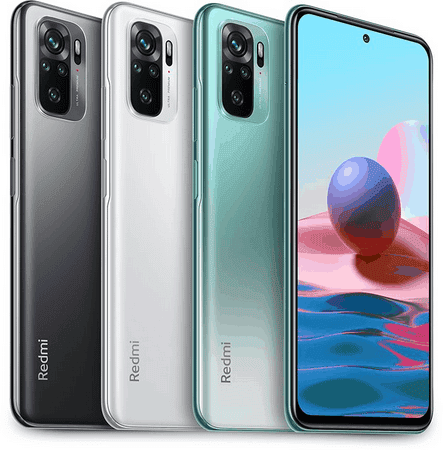
Redmi Note 10
Last month Xiaomi introduced its new Redmi Note 10 series composed of a vanilla unit, a Pro variant, and a 5G handset. Last month, we’ve evaluated the Redmi Note 10 Pro as a worthy contender for the top 10 smartphones for media consumption. Now, it’s time for the vanilla Redmi Note 10 to join the list. The device is more budget-oriented than its sibling, but will not disappoint users that need a good screen, decent performance, and a huge battery to navigate through social media apps for long hours.
Redmi has been using LCDs on its Redmi Note series for a long time. However, it is finally giving a step further to the future with its Redmi Note 10 series. Just like the Pro model, the vanilla smartphones come with a Super AMOLED screen that offers 450 nits of brightness and 1,100 nits of peak brightness. This is a 6.43-inch panel with an 83.5% screen-to-body ratio. It offers HDR10+ support and outputs 2,400 x 1,080 pixels of resolution. The panel is covered by a layer of Corning Gorilla Glass 3. Unlike its Pro sibling, the Redmi Note 10 is capped with a 60Hz refresh rate. Thankfully, there are stereo speakers to improve immersion while watching movies or playing games.
Under the hood, the Redmi Note 10 packs a Qualcomm Snapdragon 678 chipset. This chipset isn’t very popular yet but is here to succeed the likes of the Snapdragon 665, 662, and 675. It’s based on 11nm architecture and brings 2×2.2 GHz ARM Cortex-A75 cores paired with 6×1.7GHz Cortex-A55 cores. The graphics are held by an Adreno 612 which should handle demanding games at moderate settings. The Redmi Note 10 is paired with either 4GB of RAM and 6GB of RAM. Users will be able to pick either 64GB or 128GB of internal storage. As usual in the Redmi Note series, you can easily expand that amount with a good microSD card.
The Redmi Note 10 comes with a 48MP primary camera with an f/1.8 aperture and PDAF. It also has an 8MP f/2.2 ultrawide module, a 2MP f/2.4 macro module, and a 2MP f/2.4 depth camera. The device offers dual-band Wi-Fi, Bluetooth 5.0 with A2DP and LE support. The device has NFC in certain regions, FM Radio, and a 3.5mm headphone jack as well as an IR Blaster.
The Redmi Note 10 runs MIUI 12.0 based on Android 11 straight out of the box. The lights are kept by a huge 5,000mAh battery complete with 33W fast-charging support. This can charge the battery from flat to 100% in just 74 minutes. Drawing the entire capacity will be a hard task even for media consumers, and the fast-charging tech will bring it back in just a couple of minutes.
The Redmi Note 10 is easily a budget-friendly smartphone and will deliver an amazing experience in social media apps, certain games, or simply for watching movies or shows. For that reason, it deserves a place in the Top 10 smartphones for media consumption list.
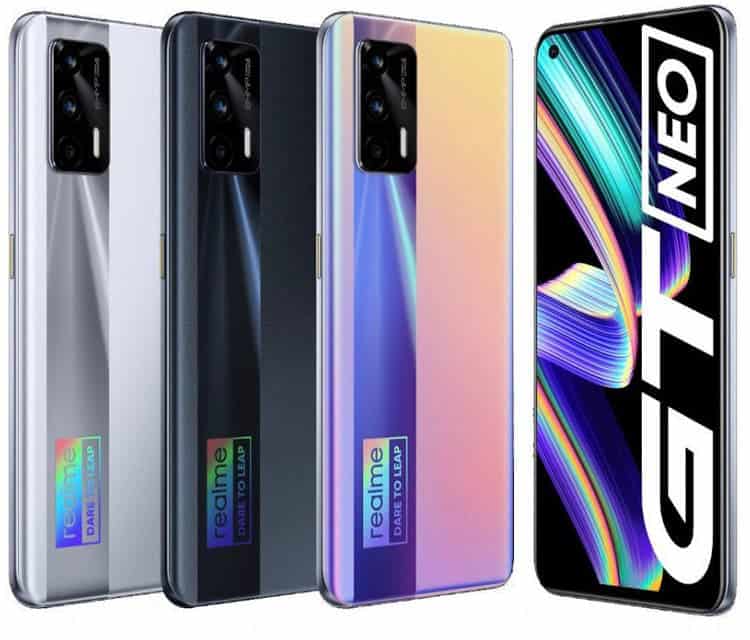
Realme GT Neo
Realme unveiled the Realme GT flagship in the beginning of March and it easily became a device on our list. The cheapest Snapdragon 888-powered smartphone didn’t live a long time without a brother in the family. In the end of the month, Realme introduced the Realme GT Neo as an affordable option offering stellar performance thanks to MediaTek Dimensity 1200 chipset. The device also has amazing specifications and easily belongs to the top 10 smartphones for media consumption as of April.
The Realme GT Neo drops the Qualcomm flagship SoC, in favor of a MediaTek Dimensity 1200 chip. Which is still an amazing chipset, especially with a more affordable price. The Realme GT Neo reached China with a starting price of $275 which easily made it one of the best possible options in this pricing point.
The Realme GT Neo does not disappoint in screen quality since it comes with a 6.43-inch Super AMOLED display with 2,400 x 1,080 pixels of resolution, 20:9 aspect ratio, and 409 ppi density. The panel supports HDR10+ and offers a 120Hz refresh rate which already puts it ahead of the 4G Realme 8 Pro.
Under the hood, the Realme GT Neo packs a MediaTek Dimensity 5G chipset made on a 6nm process. This chipset is amazing since it boasts the same A78 cores found in the Snapdragon 888 family. It has a single-core clocked at up to 3.0GHz and three more clocked at 2.6GHz. The device also comes with a powerful Mali-G77 GPU with nine cores. Due to this power, this chipset is being considered a decent option for gaming smartphones. The Realme GT Neo can be considered a modest gaming smartphone due to its appealing Cyberpunk-inspired design. The chipset is paired with 6GB, 8GB, and even 12GB of RAM. Storage is 128GB for the first two, but the high-tier variant is coupled with 256GB of Internal Storage. The phone lacks microSD card support.
The GT Neo has a triple-camera setup comprised of a 64MP f/1.8 shooter with PDAF. There is also an 8MP ultrawide module with an f/2.3 aperture and a 2MP f/2.4 macro shooter. Moving around to the top-aligned punch-hole in the front, we have a 16MP selfie snapper with an f/2.5 aperture. The GT Neo will not disappoint lovers of photography thanks to this jack-of-all-trades camera setup. Realme UI 2.0 will also be on top with a set of goodies to improve photography.
The Realme GT Neo has dual-band Wi-Fi 6 support and Bluetooth 5.1 with aptX HD codec support. The handset also packs full GNSS, NFC, and a USB Type-C 2.0 port. For multimedia immersion, it comes with stereo speakers, and the 3.5mm headphone jack is also present. The Realme GT Neo draws power from a 4,500mAh battery with 50W fast-charging support.
The GT Neo is yet to reach global markets, but once it comes, it has the potential to become a hit due to this nice set of specs and affordable pricing.
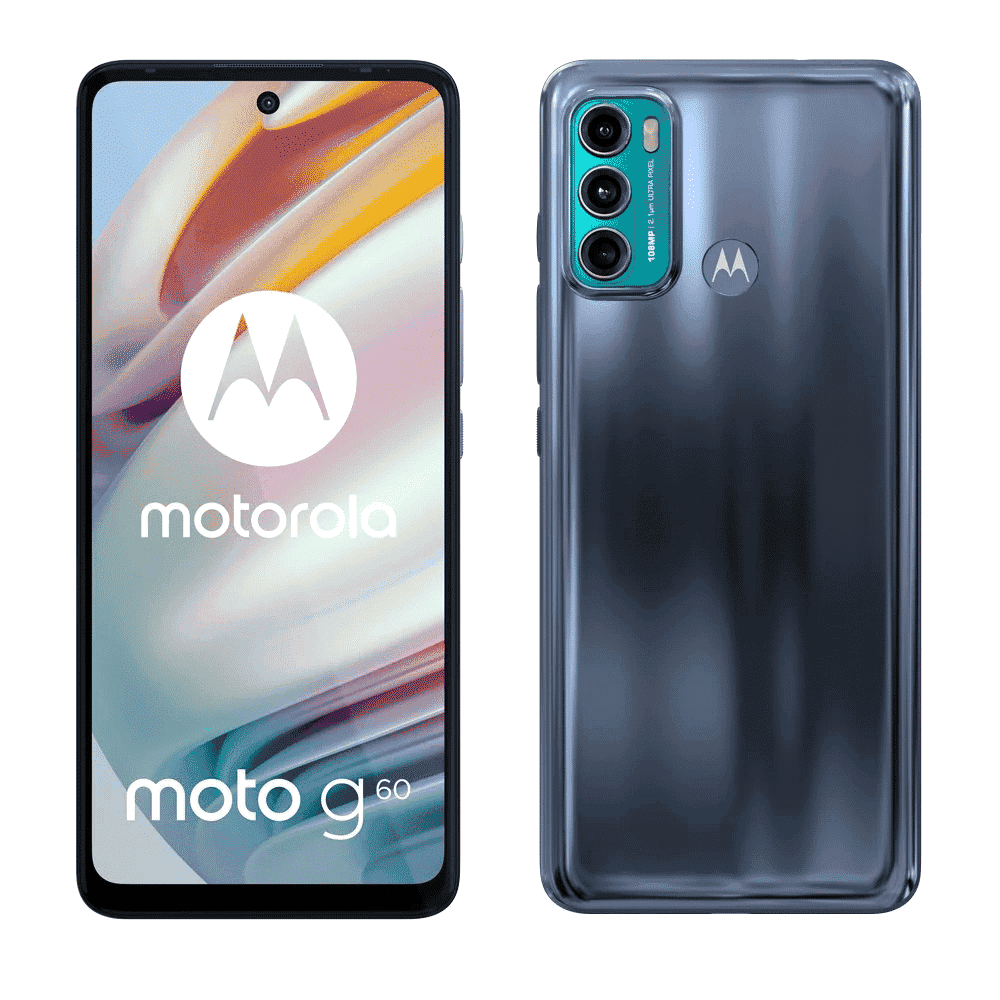
Moto G60
Motorola decided to unveil a bunch of new smartphones this month for the mid-tier segment and that includes the Moto G60. As you can see, the company has left the single-numbered lineups to follow Samsung with the dozens. The Moto G60 is so far one of the best options in the budget-friendly segment bringing a good set of specifications without being much expensive. Motorola has evolved and is finally making smartphones that will offer adequate performance and stunning quality during movie sessions.
The Moto G60 flaunts a 6.8-inch LCD with a 120Hz refresh rate and HDR10 support. It outputs 2,460 x 1,080 pixels of resolution and 395 ppi density. The display packs a center-aligned punch-hole that serves as a home for the 32MP selfie snapper. Under the hood, the Moto G60 carries the Qualcomm Snapdragon 732G which is found on other mid-range smartphones like the POCO X3 NFC or Redmi Note 10 Pro. This chipset is way better than the Snapdragon 720G and comes with a powerful Adreno 618 which can run demanding games without any hassle. Up to the moment, the Moto G60 is only available in a single variant with 6GB of RAM and 128GB of Internal Storage. You can also expand that amount thanks to the microSD card slot.
Gizchina News of the week
The Moto G60 also comes with camera enthusiasts thanks to a 108MP f/1.9 camera with PDAF. There is also an 8MP f/2.2 ultrawide module with a 1.12um pixel size and 118-degrees of FOV. There is also a 2MP f/2.4 depth sensor completing the packaging. The handset has a single loudspeaker and a 3.5mm headphone jack. Connectivity-wise, it comes with dual-band Wi-Fi, Bluetooth 5.0 with A2DP, LE, and full GNSS support. It also comes with NFC, FM Radio, and a USB Type-C 2.0 port.
The handset draws power from a massive 6,000mAh battery complete with 20W fast-charging. Although fast-charging is behind other smartphones in this pricing point, especially the ones from Chinese brands, draining this massive battery will be a hard task. The device comes with Android 11 straight out of the box.
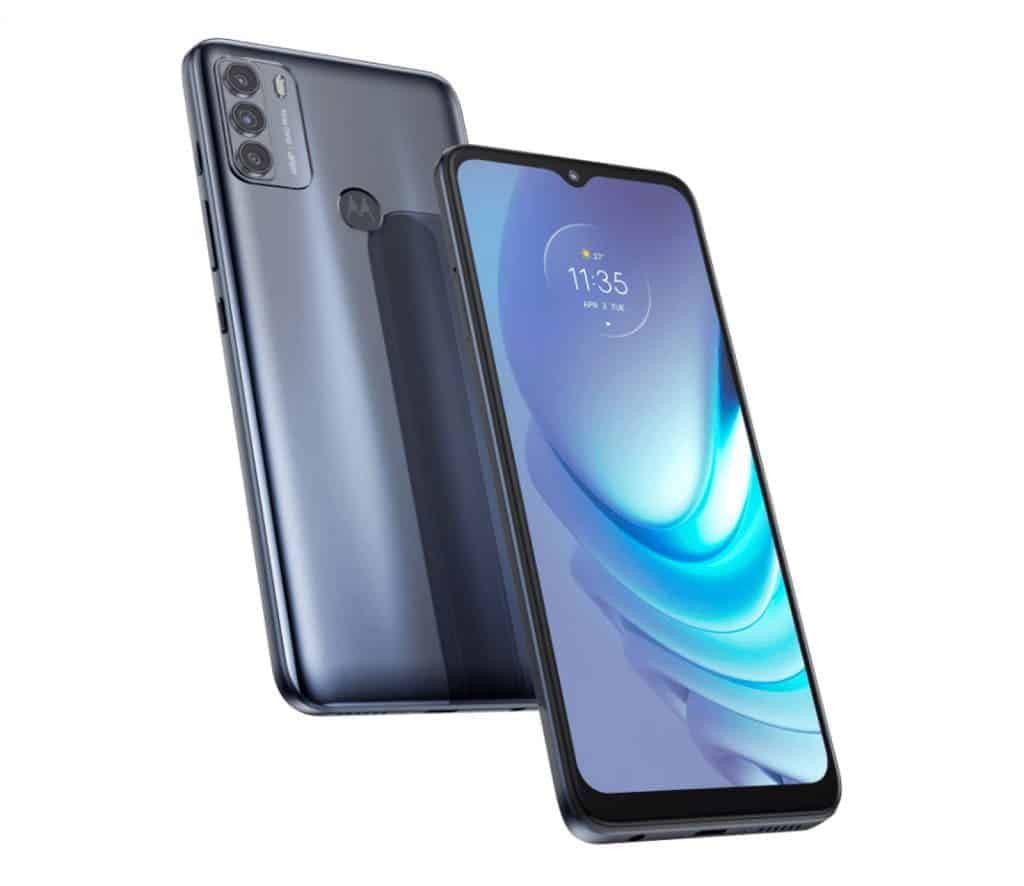
Moto G50
We have another Motorola smartphone to put in this list, and that is exactly the smartphone that comes below the Moto G60, the Moto G50. This device is even more budget-friendly than its sibling. However, those in the budget-friendly department also need a good option that will give them a good experience while consuming media right? For that reason, the Moto G50 joins the top 10 smartphones for media consumption list. It’s also a great option if you want to enter the 5G era.
The Moto G50 flaunts a 6.5-inch IPS LCD with a 90Hz refresh rate. This display has 1,600 x 720 of pixels, a 20:9 aspect ratio, and 269 ppi density. The display has a waterdrop notch that serves as a home for a modest 13MP selfie camera. Under the hood, the Moto G50 packs a Qualcomm Snapdragon 480 5G which is a budget 5G chipset. However, it’s way better than anything on the SD400 series and is also better than some chips in the SD600 family. The phone also has an Adreno 619 which is better than what some SD600 series chips have.
In the camera department, the handset has a 48MP primary camera with f/1.7 aperture and PDAF. The secondary camera is a 5MP f/2.4 macro shooter, the third and final sensor is a 2MP depth-sensing module. Other specifications include dual-band Wi-Fi, Bluetooth 5.0 with A2DP, LE, and GNSS. The phone also has NFC, FM Radio support, and a USB Type C port.
It runs Android 11 straight out of the box and the lights are kept by a 5000mAh battery with 15W charging. This is a great handset for non-demanding users and can even run some games on modest settings.
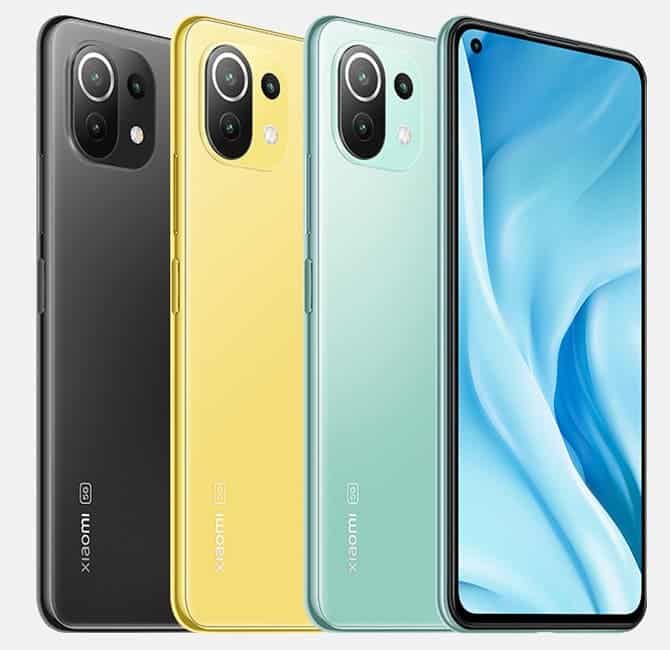
Xiaomi Mi 11 Lite 5G
Last month, Xiaomi introduced a bunch of new smartphones to complete its Mi 11 family. Apart from super-premium Mi 11 Pro and Mi 11 Ultra, the company also introduced a Lite variant. Despite the “Lite”, the device has impressive specifications including the brand new Snapdragon 780G chipset. This chip comes to succeed the Snapdragon 765G, offering improved performance and seamless 5G connectivity.
The Mi 11 Lite comes with a gorgeous 6.55-inch AMOLED display with HDR10 support and a 90Hz refresh rate. It outputs 500 nits of brightness and 800 nits of peak brightness. The handset offers 2,400 x 1,080 pixels of resolution and a 20:9 aspect ratio. The panel is covered with a layer of Corning Gorilla Glass 6.
Under the hood, the Mi 11 Lite 5G carries the Qualcomm Snapdragon 780G. This is a 5nm-based chip with 1x 2.4GHz Cortex-A78 core plus three 2.2GHz Cortex-A78 cores. Graphical tasks are run by a powerful Adreno 642 GPU. The phone is paired with 6GB or 8GB of RAM. Storage-wise there are options with 128GB and 256GB of Internal Storage.
Moving on to the camera department, the Mi 11 Lite is equally good with a 64MP f/1.8 camera with PDAF. It also carries an 8MP ultrawide and a 5MP f/2.4 macro camera. There is a selfie camera in the top-left corner of the display with a 20MP f/2.2 aperture. The device carries stereo speakers but lacks a 3.5mm headphone jack.
The handset offers Wi-Fi 6, Bluetooth 5.2 with A2DP, GPS, and NFC support. The handset also comes with an IR Blaster and USB Type-C 2.0. The device draws power from a 4,250mAh battery with 33W fast-charging support. On the software front, the device has Android 11 running with MIUI 12 on top.
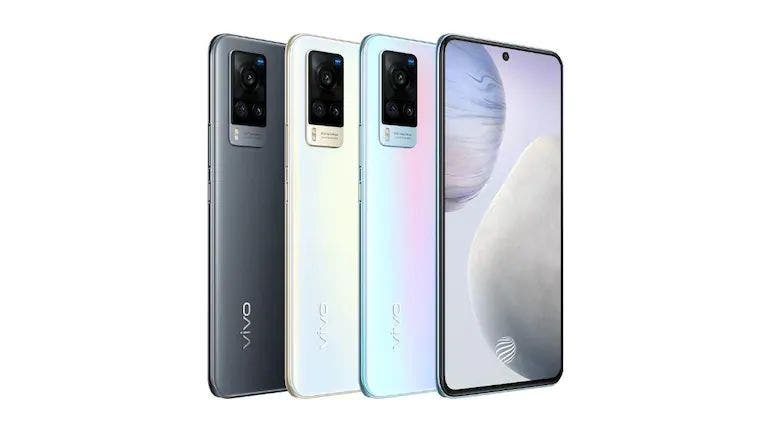
Vivo V21 5G
Vivo today announced the Vivo V21 5G and it quickly gained a place in our top 10 smartphones for media consumption of April 2021. The device brings 5G connectivity, but the overall specs are amazing for media consumers. Especially those who love taking selfies and capturing selfie videos.
The Vivo V21 5G carries a 6.44-inch AMOLED display with a 90Hz refresh rate, HDR10+, and 500 nits of typical brightness. The display outputs 2,400 x 1,080 pixels of resolution with 409 ppi density. The display uses the waterdrop notch design language which houses a 44MP selfie shooter with f/2.0 aperture, Auto-Focus, and Optical Image Stabilization. This is an amazing package for capturing stunning selfies. Moving around to the back, the handset comes with a 64MP camera with f/1.8 aperture, PDAF, and OIS. It also has an 8MP ultrawide module and a 2MP f/2.4 module for macro shots.
Under the hood, the smartphone boasts the Dimensity 800U chipset which is paired with 8GB of RAM and 128GB of Internal Storage. Other features include dual-band Wi-Fi, Bluetooth 5.1, GNSS, and USB C port. The device has a modest 4,000mAh battery, however, it will charge fully in less than an hour thanks to 33W fast-charging.
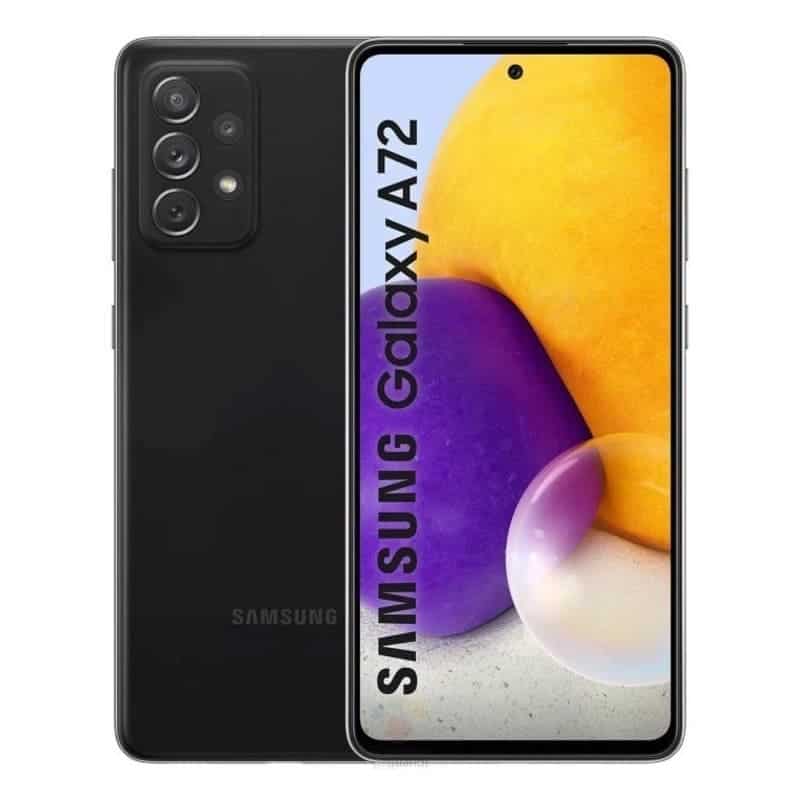
Galaxy A72 5G
Samsung unveiled the Galaxy A72 5G as a premium mid-range offering featuring support for the fifth-gen network. However, the device has a lot to offer which easily gives it a place in the top 10 smartphones for media consumption.
The Galaxy A72 5G packs a 6.7-inch Super AMOLED display with 2,400 x 1,080 pixels and 20:9 aspect ratio. The device offers 120Hz of refresh rate and 800 nits of brigthness. The device has a center-aligned punch hole in the top comprising a 32MP selfie snapper which is amazing for selfie lovers.
Under the hood, the Qualcomm Snapdragon 750G which is an amazing chipset beyond the Snapdragon 732G and offering support for the 5G networks. The handste is paired with 6GB of RAM and 128GB of Storage. However, there is a better option with 8GB of RAM and 256GB of Internal Storage. You can also expand the memory via a good microSD card slot.
The handset does not disappoint in the camera department. It comes with a 64MP primary camera with f/1.8 aperture, PDAF and OIS. It also has an 8MP telephoto module with PDAF, OIS, 3x optical zoom, 12MP ultrawide camera and a 5MP macro sensor. The device has dual-band Wi-Fi, Bluetooth 5.0, GNSS, NFC and a USB Type-C 2.0. The handset draws power from a 5,000mAh battery with 25W fast-charging.
The Galaxy A72 5G runs Android 11-based One UI 3.1 straight out of the box.
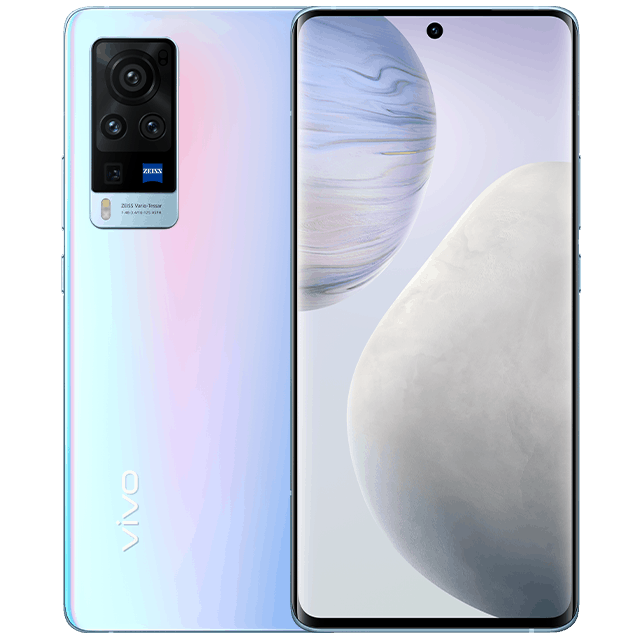
Vivo X60 Pro
Last month, Vivo brought its iconic photography-centric Vivo X60 series to global markets. The global variant packs a Snapdragon 870 chipset, decent cameras and capable batteries as well as a gorgeous display. For that reason, it deserves a place amon the top 10 smartphones for media consumption.
The Vivo X60 Pro packs a 6.56-inch AMOLED display with 2,476 x 1,080 pixels of resolution and 120Hz refresh rate. The panel has HDR10+ support and Corning Gorilla Glass 6 protection. Under the hood, the handset carries a Qualcomm Snapdragon 870 chipset with 12GB of RAM and 256GB of Internal Storage.
The handset comes with a 48MP camera comprising the excelent gimbal-like stabilization. It also comes with a 13MP telephoto camera with PDAF and 2x optical zoom. It also carries a 13MP ultrawide camera with 120-degrees of FOV. For selfies, users can capture their moments with an excellent quality thanks to the 32MP selfie snapper with f/2.5 aperture.
The Vivo X60 Pro will carry a dual-band Wi-Fi, Bluetooth 5.1 with aptX HD support. Moreover, it comes with full GNSS, NFC and a USB Type-C 2.0 port. The handset has a under-display fingerprint scanner and a 4,200mAh battery with 33W fast-charging. It runs Android 11-based with FuntouchOS 11 running on top. It also includes the virtual RAM feature that adds extra 3GB of RAM for the smartphone.
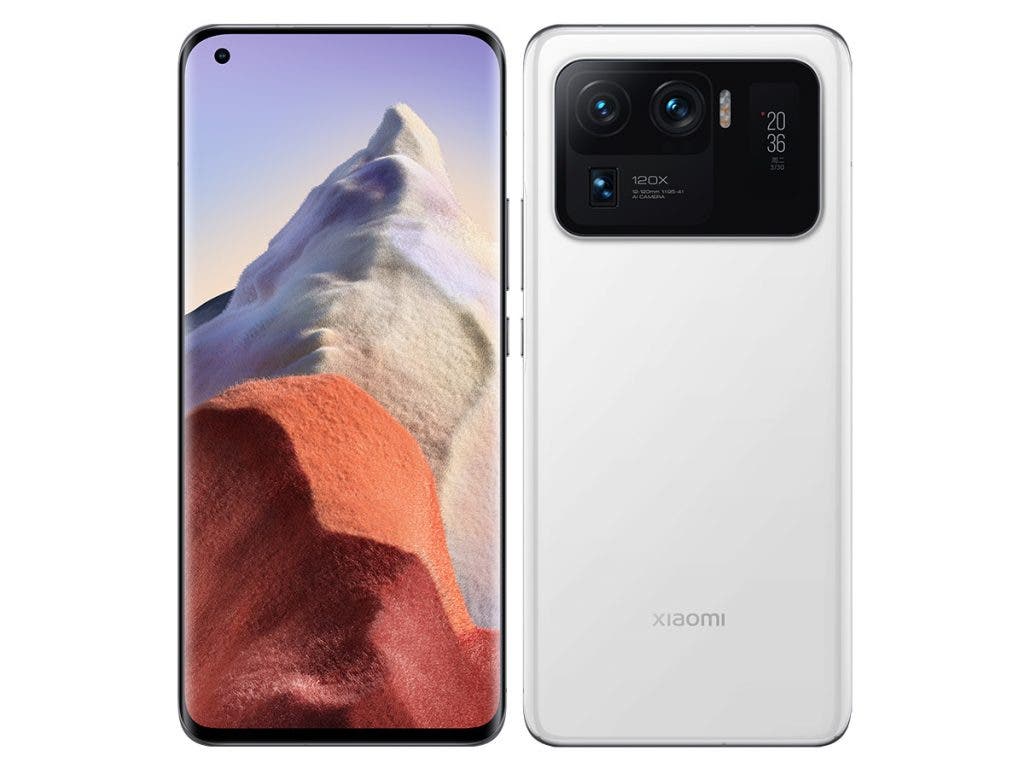
Xiaomi Mi 11 Ultra
Last month, Xiaomi unveiled the true king of the Mi 11 series in the form of its Mi 11 Ultra. The device closes the list as one of the best smartphones ever made by Xiaomi. It certainly deserves a place among the top 10 smartphones for media consumption. After all, it comes with an amazing camera setup, gorgeous display and huge battery as well as an innovative secondary screen.
The Mi 11 Ultra flaunts a gorgeous 6.81-inch AMOLED display with 120Hz refresh rate, HDR10+, Dolby Vision. It offers 900 nits of brightness and up to 1,700 nits of peak brightness. The device has QHD+ resolution with 3,200 x 1,440 pixels and 515 ppi density. It is covered by the cutting edge Gorilla Glass Victus.
The Mi 11 Ultra is powered by the Qualcomm Snapdragon 888 5G chipset which is paired with 8GB of RAM and 12GB of RAM. Storage starts on 256GB and goes all the way up to 512GB.
The device has a primary 50MP camera with dual-Pixel PDAF, Laser Auto-Focus, OIS and a f/2.4 aperture. The secondary camera is a 48MP f/4.1 periscope telephoto module with PDAF, OIS and 5x optical zoom. The final sensor is also a 48MP unit with f/2.2 aperture, 128-degrees of FOV and PDAF. Interestingly, the phone comes with a secondary 1.1-inch AMOLED screen that can be used as viewfinder for capturing selfies with the main camera. You can still take selfies with the frontal camera that offers up to 20MP resolution.
The Mi 11 Ultra has Wi-Fi 6e, Bluetooth 5.2 with A2DP, LE and aptX HD and full GNSS. It also offers NFC and counts with a Infrared port. The device has a USB Type-C port. The Mi 11 Ultra is an amazing pick for media consumers due to its powers and huge battery. The device carries a massive 5,000mAh battery which charges very fast thanks to 67W fast-wired charging. It also has fast wireless charging with 67W and reverse wireless charging with 10W.
CONCLUSION
And that is our April list of top 10 smartphones for media consumption. Do you have a particular device in mind to add to this list? Feel free to leave it in the comments section. In the next month, we will be bringing the next batch of better devices for consuming media and exploring social media applications as well as playing games! Be ready. Feel free to check our March list if you want more options, we’ll be back in the next month!

